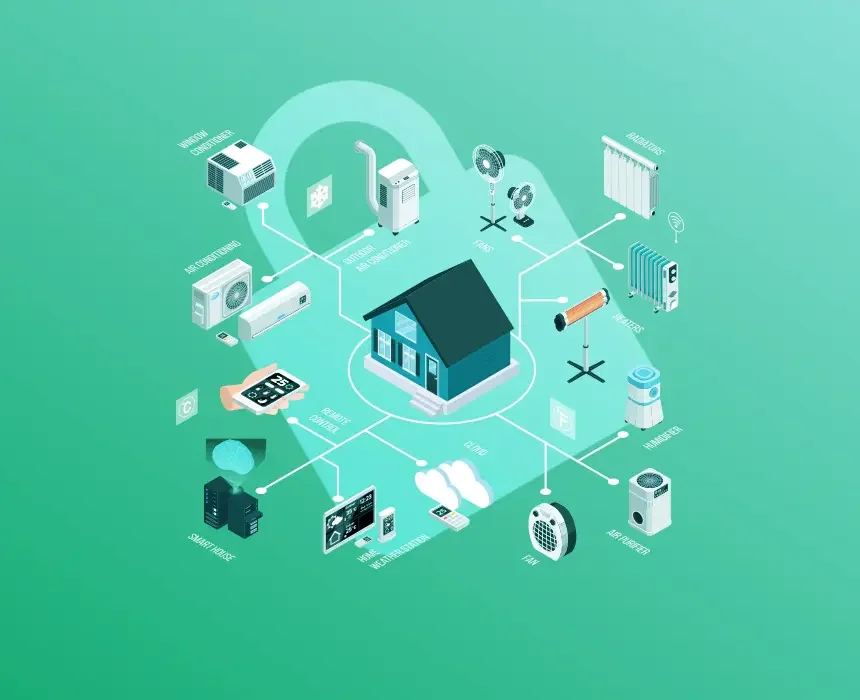
In an increasingly interconnected world, the ability to securely access remote systems and devices has become an integral part of modern business operations. As organizations expand their digital footprint, transitioning to the cloud, and embracing remote work, the significance of ensuring secure remote login via SSH (Secure Shell) cannot be overstated.
Although there are many means and ways to facilitate connections with a remote server, the two most used protocols are Secure Shell (SSH) for Linux-based machines and Remote Desktop Protocol (RDP) for Windows-based machines. In this blog, we will learn more about Secure Shell and how using a business VPN solution can help in facilitating secure remote login using SSH.
Secure Shell, or Secure Socket Shell (SSH), is a protocol that enables secure connectivity to remote machines via a text-based interface. Targeted primarily at system administrators and network professionals, SSH ensures security for those who need to manage remote systems.
Secure Shell (SSH) comprises of two essential components: the client and its corresponding server-side counterpart. The SSH client resides on your local machine, while the server-side element takes its place on the remote device. As the client tries to establish a connection, a vital step involves credential verification. SSH offers various types of verification mechanisms:
SSH is designed to provide encrypted communication over an insecure network, such as the Internet. While SSH itself is quite secure, there are still several reasons why additional protection might be necessary:
Overall, SSH is a robust and widely used protocol for secure remote access, but the security of the entire system depends on various factors, including proper configuration, user practices, and additional security measures. One of the many ways to secure the SSH connections to your remote machines is routing the connection via VPN. In this blog, we will learn how to set up a secure remote login via SSH through VPN.
A Virtual Private Network (VPN) can play a significant role in securing remote login to SSH (Secure Shell) by adding an additional layer of security to the communication between the client and the server. Here's how a VPN enhances security for remote SSH logins:
Encryption: VPNs encrypt the data transmitted between the client (your computer) and the VPN server. This encryption adds a layer of confidentiality to your SSH communication.
Access Control: A VPN can restrict access to the network, ensuring that only authorized users can connect. This enables additional authentication before users even reach the SSH login stage.
Protection from Network-based Attacks: Using public Wi-Fi or untrusted networks can expose your SSH connection to various network-based attacks. A VPN creates a secure "tunnel" over these networks, protecting your data from potential threats like packet sniffing and man-in-the-middle attacks.
Bypassing Firewalls and Restrictions: In some cases, SSH might be blocked by firewalls or network restrictions. A VPN can help bypass these restrictions by encapsulating the SSH traffic within its encrypted connection, allowing you to connect to your SSH server even when regular connections are blocked.
Reducing Exposure to the Internet: By requiring users to first connect to a VPN before accessing SSH, you reduce the direct exposure of your SSH server to the internet. This can potentially limit the attack surface and provide an additional layer of defense against unauthorized access.
UTunnel streamlines the deployment of VPNs and the setup of Zero Trust Access, ensuring the security of SSH connections. By deploying a UTunnel server and configuring firewall rules on the SSH server, access can be restricted solely to connections originating from the IP address of the UTunnel server. This arrangement ensures a confidential and encrypted line of communication between clients and SSH servers, granting access solely to users connected to the UTunnel server through the UTunnel VPN client application.
Furthermore, UTunnel’s OneClick Access, its Zero Trust Application Access (ZTAA) solution seamlessly supports SSH. This innovative feature simplifies secure SSH access, eliminating the need for users to connect to the UTunnel server via a VPN client. Via OneClick Access, users can securely access protected SSH servers directly within the UTunnel web dashboard, from their web browser. Also, OneClick Access offers more stringent and fine-tuned access controls for SSH connections, ensuring that users are exclusively granted entry to designated resources. This effectively thwarts lateral movement and fortifies the security posture.
For diverse needs such as remote work or server administration, UTunnel presents an uncomplicated approach to bolstering SSH connections.
It's important to note that while a VPN can greatly enhance the security of remote SSH logins, it's not a replacement for good SSH security practices. You should still implement strong authentication methods, disable password-based authentication in favor of key-based authentication, keep your SSH server and software updated, and follow other best practices to ensure the overall security of your SSH connections.
Remember that security is a multi-layered approach, and using both a VPN and proper SSH security practices together can provide a more robust defense against potential threats. UTunnel Secure Access emerges as a commendable choice, effectively addressing the VPN aspect of this equation.

A router is perhaps the most important gadget in any modern-day home. It controls access to your home Wi-Fi network that is used by all Wi-Fi-enabled devices such as mobile phones, laptops, and …
05 February 2021
With the ever-increasing rise in cyberattacks across the globe, cybersecurity has now become a serious concern for businesses of all sizes. Cisco's latest survey, "Big Security in a Small Bu…
04 November 2020